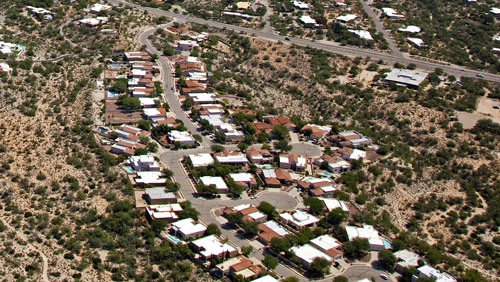Public Policy Review

WRRC June conference takes on the weighty issue.
Information about this year’s Water Resources Research Center conference is frontpage news in this edition of the Arizona Water Resource. The 2003 WRRC conference considered rural and watershed-based solutions to water management issues. Most issues had to with growing demands for water, and since then rapid population growth — and drought — has continued. Water professionals in the state continue to discuss the challenges of assuring long-term water supplies and meeting water management objectives, whether statutory or otherwise. Not only water managers but policy makers, the business community and the public are keenly interested in these issues.
In this column I will discuss three water planning situations from different regions of the state, each providing a very different approach to addressing water sufficiency questions. The examples raise the policy questions being deliberated and debated throughout the state.
Proposed developments outside Kingman have attracted much press coverage. Mohave County is not within an Active Management Area and current law allows developments that do not demonstrate an adequate water supply. First purchasers of the property must be informed if the Arizona Department of Water Resources finds a water supply inadequacy; subsequent purchasers are not required to be notified. Questions about the adequacy of water supplies have been raised about huge developments in the area proposed by two builders. Current law does not authorize the Mohave County Board of supervisors to disapprove plans based on water supply determinations.
Corporation Commissioner Kris Mayes, however, has raised the question whether the Arizona Corporation Commission, in the face of an ADWR inadequate water supply finding, has the power to influence the formation of a new water company. Surely no one expects the ACC to make land use determinations; but does the ACC have the power to insist on sufficient water supplies to serve a newly approved service area? This is a bold move in an arena where few options are available. While the debates over policy continue, hydrologists study groundwater supplies in the area.
In Cochise County, at the opposite corner of the state, the Board of Supervisors recently adopted a Sierra Vista Sub-Watershed Water Conservation and Management Policy Plan. In explaining reasons for the plan, the board cites: (1) the special attention this sub-watershed has received from Congress; (2) the county’s agreement to assist Fort Huachuca in meeting its water management objectives; (3) the state’s Growing Smarter legislation, which “allows all counties to specifically plan for development as it relates to available water resources;” (4) their own Comprehensive Plan, which allows for the establishment of area-specific plans; and (5) the public consensus regarding pumping water from the aquifer, water reuse and water augmentation.
One of the provisions limits water use for rezoning to a higher density to be “the same or less water than would be used if the property were developed under existing zoning.” The policy also requires that new residential development proposed as subdivisions or in rezonings to higher densities “shall conserve water use by incorporating efficient, effective and integrated water pumping, distribution, metering and recharge systems as well as water conservation Best Management Practices.” This is another important step toward connecting land use and water supplies outside of AMAs; technical studies continue.
Pinal County provides the third example. Along with State Land and others, the county is looking at the development of a huge tract of state land known as Superstition Vistas. A recent report by the Morrison Institute for Public Policy at Arizona State University offers scenarios for the future of the 275-square-mile land expanse, including one that projects the region’s population as 900,000 people in 2060, roughly the equivalent of current metropolitan Tucson.
Released April 6, the report notes that water sufficiency is frequently questioned. It states: “Unlike many other places in the U.S., an area like Superstition Vistas can develop without an immediate local water supply. Rather, it needs to compete successfully for available supplies in the region.” The report states that the water analysis performed as part of the larger investigation of the development of Superstition Vistas is likely to draw upon four water sources: Central Arizona Project water, Colorado River water, groundwater and reclaimed water. Average demand is assumed to be 186 gallons per capita per day, the current average for new subdivisions in the metropolitan Phoenix area, with the expected 900,000 people requiring 190,000 acre feet of water annually.
The report notes that demand could vary significantly depending on the design of Superstition Vistas and types of water conservation practices eventually adopted; it concludes that the area should be able to compete favorably for water supplies. Tucson Water could be a point of reference, its current gpcd, including all its supplies and uses, is 177. (The 186 gpcd rate seems high for a new “city” in the desert.)
The above examples underscore that competition for future water supplies could be fierce among different regions of the state, but that new approaches to resolving the growth and water problems are under consideration. With all areas of the state facing rapid growth and varied water resource constraints, the examples point to the need to fully explore both demand and supply side solutions. The WRRC conference in June will include speakers who will touch on these three examples and many more. Please join us!

